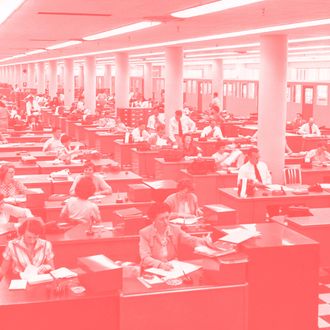
This week, the founder of a Seattle tech company made a remarkable announcement: Dan Price of Gravity Payments will establish, essentially, a company-wide minimum wage, in that every last employee would take home $70,000 per year, reports the New York Times. Price said his decision was inspired by reading an article about happiness — specifically, he was talking about a 2010 paper published in Proceedings of the National Academy of Sciences, by Princeton University professors Daniel Kahneman and Angus Deaton. When that paper was first published, most of the coverage focused on the finding that more money only makes people happy up to a certain point, and that anything over $75,000 per year didn’t result in greater happiness. (So Price is a little under that mark with the $70,00-per-year promise.)
But I was curious to take a closer look at the opposite end of Kahneman and Deaton’s findings, the stress that comes with making $1,000 per month or less. Using data from the Gallup-Healthways Well-Being Index, they found that most people — 70 percent — who made $1,000 per month or less reported experiencing worry and sadness the previous day, something the authors dubbed the “blue effect.” The low-income group’s health suffered, too, with about 70 percent reporting headaches (compared to 38 percent of those who made $3,000 or more per month) and 40 percent suffering from asthma (compared to 21 percent of the higher-income group).
And the weekend, a restorative time for the higher-income group, was no break from sadness and worry for those making less money. Forty-four percent reported the “blue effect” over the weekend, compared to just 17 percent of those making considerably more per month. As the authors phrase it in their paper, “More money does not necessarily buy more happiness, but less money is associated with emotional pain.”




